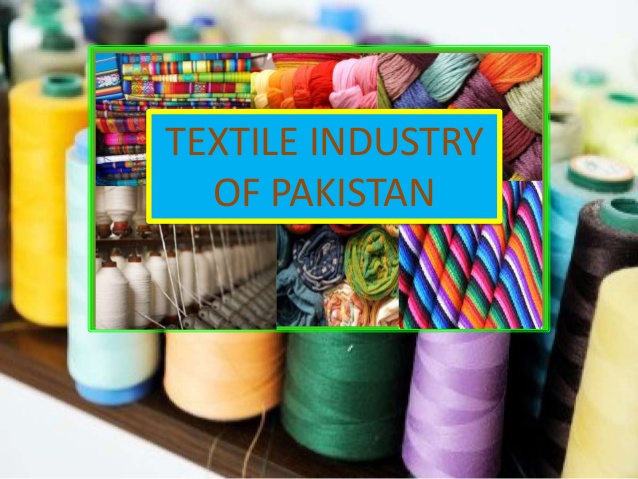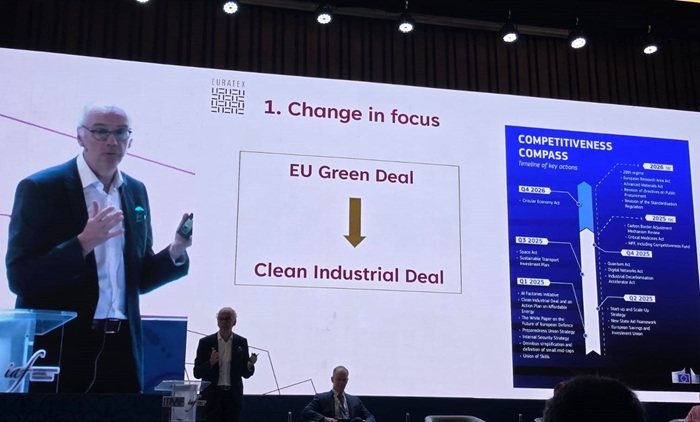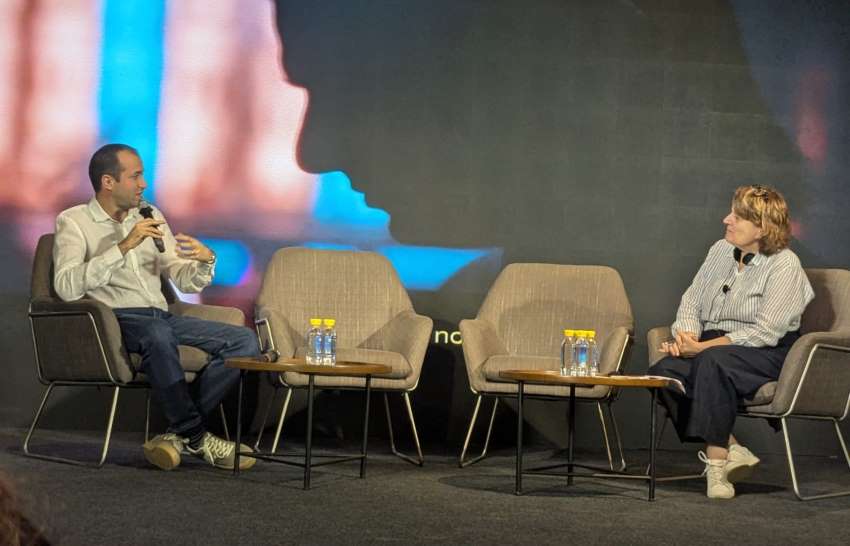FW
India's knitwear exports to Japan made up just 0.3 per cent of the total knitwear products imported by the country in 2014. Interestingly, India enjoys duty free access to Japan. Indian knitwear exporters need to come out with innovative designs that suit the taste of Japanese. They have to improve product quality and display better adherence to delivery schedules.
Though Chinese textile exporters do not enjoy duty free access in Japan, almost 80 per cent of the total range of textile products imported into Japan is from China. India's share in wovens garments to Japan stands at 1.45 per cent. It is not just pricing that works in Japan, the color and design for a particular season is very important. Fashion trends in Japan change every 40 days. By the time Indian exporters ship the readymade garments, they are already out of season in Japan.
One way out is for Indian apparel makers to seek the help of Japanese fashion designers who can offer color and fabric forecasts to help Indian apparel exporters understand Japan’s changing styles in clothing. And as it happens, Japan is trying to reduce its dependence on Chinese clothing. India can seize this opportunity to make inroads.
Karnataka, and especially Bangalore, will see a lot of investments in the textile sector. With a cumulative outlay of over Rs 2,000 crores, the projects are estimated to provide direct employment to more than 5,000 people, mostly women. Among the big investments is Himatsingka Linen which will spend Rs 1,500 crore to set up a plant to manufacture bedroom linen and other fabrics. Himatsingka is a vertically integrated home textile major.
Shahi Exports will set up an unit in Bangalore. It is estimated to create over 1,000 jobs. Jockey will invest Rs 132 crores in Hassan to manufacture inner garments. It will have an employment potential for 700 persons. Indo Count, one of the world’s biggest producer of bedspreads, has shown interest in setting up a unit in Dharwad, with an investment of Rs 250 crores. Indo Count is vertically integrated right from spinning to finished made-ups. The company takes pride in being India’s third biggest exporter of bed linen.
Bangalore is home to several topline clothing brands and is a favored location for garment companies. Also a mega silk park in Mysore will cater exclusively to the integrated silk textile sector, ranging from silk rearing to manufacture of silk garments.
The textile processing park at Cuddalore in Tamil Nadu would generate direct employment to 5,000 people and indirect jobs for 25,000 people within two years. The project is eco-friendly and the park and the technology for the treatment and disposal of effluents have been approved by the pollution control and the maritime boards. It’s a model park with latest technology and 10 leading textile group companies in Tamil Nadu are all set to establish their processing units in the park.
The processing units predominantly use common salt for dyeing cotton fabrics, which is harmless when discharged into the sea. The textile processing does not involve any toxic chemicals. Effluents would be treated and discharged under marine standards. Fears about depletion of groundwater are groundless as the processing units would tap groundwater below a 1,000 ft.
The project has a 50 per cent grant under the Integrated Processing Development Scheme to install and operate eco-friendly and cost effective technology. There is a proposal for implementing a marine discharge technology. An online monitoring system would be implemented and monitored by a competent third party agency under the supervision of the Pollution Control Board.
In the sea discharge method, effluent water is treated and colors are removed. Hard water (which is saline) is then thrown into the sea. This causes no harm to the ocean as sea water is already salt heavy.
Northern Textile Mills (Nortex) ramped up production by 100 per cent since it relocated from Zimbabwe to Botswana. A number of companies have exited Zimbabwe citing tough business environment following the introduction of the Indigenisation and Economic Empowerment Act.
Nortex was established in 1990. It has captured a significant market share in the Southern African Development Community region including Zimbabwe and South Africa. It is currently targeting export markets in Asia, the European Union and the United States of America and is set to be a force to reckon with in the global market in cotton towel products. It offers a broad range of terry towels, napkins, beach towels. It manufactures both woven and warp knitted snag free towels.
The company is a water-based industry requiring about 4,00,000 liters of water a day. However, in view of the scarcity of the commodity, the company recovers 70 per cent of this amount through recycling. Nortex produces 7,500 kg of towels a day. It uses its capacity fully. The company used to get its yarn from Zimbabwe, since the country had the best quality, but with the drying-up of that source, it has had to look elsewhere, notably South Africa.
www.nortex.co.za/

Recommendations to help exports

The panel asked for priority in gas availability and immediate refund of all outstanding claims of sales tax, DLTL and customs rebate to reduce the cost of doing business and make the industry compatible in the region. The committee raised serious concerns about the dismal condition of textile industry with continues decline in exports despite getting GSP plus status, decline in investment, shortage of gas and high power tariff and increasing cost of doing business. Pakistan’s textile exports declined 17 per cent in July 2015 against the same period of last year.
The committee asked the government to liquidate pending refunds to textile exporters as early as possible. It further asked Federal Board of Revenue to release sales tax and customs refunds which are pending for the last three years.
Government intervention need of hour
The committee said sales of cotton crop is about to begin and the government should address textile exporters' concerns immediately. Chairman All Pakistan Textile Mills Association (APTMA) S M Tanveer urged the government to give direct subsidy to cotton growers instead of sticking to procurement one million bales. As per Muhammad Zubair Motiwala, Chairman Pakistan Apparel Forum (PAF) the World Bank projects global apparel market to touch $1.18 trillion by 2020 and $2.11 trillion by 2025. However, Pakistan is in a disadvantages position in the global market due to its wrong policies.
Various studies have shown, Pakistan’s compound growth rate textile and apparel export from 2005 to 2013 stands at 3.6 per cent against 11.3 per cent in India and 16.2 per cent in Bangladesh. Pakistan’s, value addition for every one million bale is $1.17 billion against $179 billion in India and $6 billion in Bangladesh. Pakistan’s electricity tariff is $0.15 kWh (highest among the three) against $0.13 kWh in India and $0.09 kWh in Bangladesh. Pakistan's gas tariff is $6.27 per mmbtu against $4.66 in India and $1.86 mmbtu in Bangladesh.
Pakistan's installed capacity utilisation is less than 70 per cent due to non-availability of energy on 24/7 against over 90 per cent both in India and Bangladesh. Pakistan's corporate tax rate is the highest at 34 per cent against 25 per cent in India and 27.5 per cent in Bangladesh. Pakistan is the only country whose currency appreciated five per cent during 2013-15 against 2.7 per cent depreciated in India and 0.7 per cent in Bangladesh.
To highlight the problems being faced by textile players of the country, All Pakistan Textile Mills Association (APTMA) presented a nine-point proposal to the Federal Textile Board. APTMA’s nine point proposal includes: withdrawal of various surcharges on electricity, withdrawal of GIDC and the recent hike in gas tariff, zero-rating to textile industry, long-term finance for ginning and spinning sector, export re-finance to spinning and weaving sectors, five per cent export incentive for capturing non-traditional markets, a uniform tax rate of three per cent on the whole textile value chain, cracking down on dumping and smuggling, and immediate release of the pending payments.
www.aptma.org.pk
Officials in Bangladesh are worried that any delay in forming of rules on labour law could be a crucial issue when top officials of the Sustainability Compact review progress in workplace safety of the country’s apparel sector. Top officials and representatives from the European Union (EU), US, Canada, the Netherlands, the UK and ILO will be present at the second review meeting scheduled to be held in Dhaka in November.
According to those involved in the process, Bangladesh apparently has failed to comply with some important conditions of the Compact. This includes formulation of rules to implement the labour law and extend those to the export processing zones (EPZ) or making necessary changes in the existing EPZ law, and completion of factory inspection.
Some requirements were met by the government, which included appointing 200 additional inspectors and launched publicly accessible database. However, it failed to formulate rules even two years after the law was amended and finalise the new EPZ law till date. The EU published a technical status report on the Compact, recently, which termed the adoption of the rules as a matter of ‘highest priority’.
A senior government official, when questioned, said that so far, the government has met all the requirements except the formulation of the rules, which might be the 'hot' issue in the upcoming review meeting of Compact.
Sources, though, believe that nay further delay in meeting condition might result in an unfavourable effect on the efforts to revive the GSP in the US market and continue enjoying the same benefit in the EU market.
The central government and the local government of Xinjiang Uygur Autonomous Region in China, over two years, have come up with several positive policies. These support the development of the local textile and garment industry, attract textile and garment enterprises from outside Xinjiang to invest and set up mills in the region. This has prompted fast development of local textile and garment industry.
The local textile industry would have more than 10 million spindles by the end of 2015, say experts. Liu Yanning, Head of administrative office of Xinjiang textile industry avers the industry in the regions made further progress merchandising and attracting investment, this year. Textile and garment enterprises from other areas outside Xinjiang had invested in 118 projects in Xinjiang, by the end of June. This included 58 textile projects with total investment of yuan 26.75 billion and 60 garment and home-textiles projects with total investment of near yuan 2.93 billion. The local industry’s fixed-asset investment had hit yuan 7.05 billion, up 187 per cent over the same period in 2014.
This year, four million new spindles will be installed, which would add up to the total textile production capacity of over 10 million spindles by the end of 2015. The total processing capacity of the garment sector is 50 million pieces and 67,000 jobs. The textile production capacity went up from the 5.5 million spindles in 2012 to 7.60 million spindles last year. It would further go up to 10 million spindles at the end of 2015. Yanning says that at this pace, the textile industry is expected to hit the target of 20 million spindles.
Wool, cotton, polyester prices are on a downward spiral and Chinese cotton has dropped as much as 40 per cent since January 2014. Also, the dip in price of crude oil and gas has made transportation more economical. Cotton prices started to fall last year due to the abandonment of a disastrous government’s stockpiling policy in China. This year though, prices have been relatively stable supported by the expectations of a lower end of the season stock level. According to forecast, this is expected to dip by 5 per cent year-over-year in the 2015-16 season.
Transportation costs as well as polyester yarn, has been affected because of the recent falls in crude oil and gas prices. Polyester yarn is made out of crude oil derivatives. Prices of polyester reduced considerably due to a sharp drop in the derivative’s cost, in the second half in 2014. Moreover, polyester was under pressure because of the fall in cotton prices as it has to stay cheaper than cotton to remain competitive.
In 2014, Australian wool prices were relatively stable in AUD, but became cheaper in USD terms due to the strong US dollar. Wool prices recovered though, in recent months, because of China’s low stock availability and strong demand.
Thus, since textile prices have fallen through the years, will clothes get cheaper and will these savings get passed along the supply chain? It seems not, for, as per market analysts, the cost of raw material in apparel production consists of only around 10 per cent of the total cost. The cost of production, packaging and shipping into the US does not exceed 30 per cent and the labour cost is merely between 0.5 per cent to 1 per cent.
Italian fabric production declined 4.1 per cent in the first semester of 2015 compared to the same period last year. The country’s textile exports recorded a 2.3 per cent loss in the first five months of the year. At the same time, fabric imports into Italy declined by four per cent, resulting in a trade surplus. Wool fabric exports recorded the strongest growth, followed by linen, while all other fibers saw their sales abroad decrease.
In the first five months of 2015, Germany was as always the first outlet for Italian exports, with a 10.6 per cent share of the total, though it recorded an 8.3 per cent decrease. Romania, the second destination for Italian fabrics, also declined by 4.3 per cent and so did France, Italy’s third textile market, by 1.3 per cent.
Among non-European destinations, exports to Tunisia plunged by 27.9 per cent. At the same time, exports to China grew 12.7 per cent and those to Hong Kong by 9.8 per cent. These two destinations together now represent the second biggest export outlet for Italian textiles. A 15.2 per cent expansion was also recorded by the US, which is the fourth biggest market for fabrics made in Italy.
Bangladesh's apparel makers are finding it tough to carry out factory remediation program. Remediation programs were started last year after completion of initial inspections by western retailers. Garment factory inspections were launched to identify workplace risks and ensure safety compliances after the Rana Plaza building collapse that killed more than 1,100 workers. Some 3,000 garment factories have so far been assessed.
One reason for the slow pace of remediation is the unwillingness of many factory owners to repair flaws. Another is non-availability of safety equipment including fire doors, sprinklers and experts to install them. The recent political instability added to the difficulties. But apparel makers claim that most identified flaws have already been fixed, and that the main stumbling block is shortage of funds.
A factory needs to spend a sizeable amount to fix safety flaws. Some apparel makers are unwilling to spend their own money for improvements. They are looking for financing sources, either from Accord or Alliance, or others. There are some 3,500 garment factories in operation throughout Bangladesh though the real number is supposed to be higher as there are many units that are not affiliated with trade bodies and do sub-contracting.












